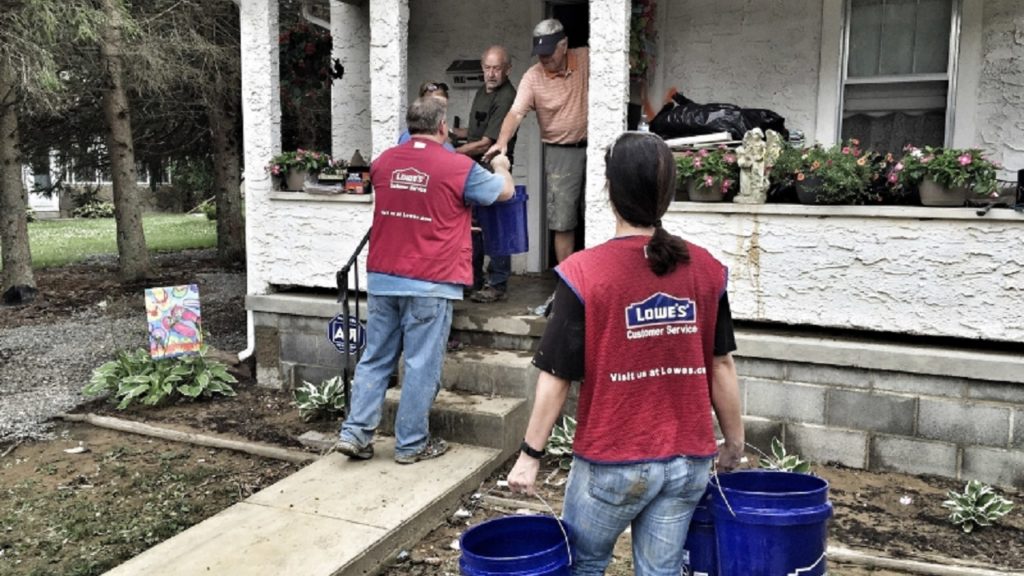 Special to the Philanthropy Journal
Special to the Philanthropy Journal
By Clara Reynolds
When the phone rings in the 2-1-1 contact center at the Crisis Center of Tampa Bay, a person in need immediately reaches a person who can help. Just like that.
But that’s just the beginning.
That phone call – which can be placed 24 hours a day, seven days a week, 365 days a year – is the first of many connections that take place as the Crisis Center team fulfills its mission of ensuring no one in its community has to face crisis alone.
 With a client-focused approach, the Crisis Center of Tampa Bay serves as a conduit, working collaboratively and collegially with a variety of nonprofits and service providers to be certain every person who needs help gets the best help available. In addition to providing in-house service programs focused on trauma recovery, the Crisis Center helps clients navigate the complex system of care, breaking down barriers that sometimes prevent like-minded nonprofits from working together on common goals.
With a client-focused approach, the Crisis Center of Tampa Bay serves as a conduit, working collaboratively and collegially with a variety of nonprofits and service providers to be certain every person who needs help gets the best help available. In addition to providing in-house service programs focused on trauma recovery, the Crisis Center helps clients navigate the complex system of care, breaking down barriers that sometimes prevent like-minded nonprofits from working together on common goals.
Help. Hope. Healing.
That’s the Crisis Center’s motto.
Why limit the available pathways?
Licensed through the Federal Communications System, the Crisis Center of Tampa Bay is the area’s largest telephone crisis counseling resource. Its 2-1-1 line is the mechanism that connects it to the community in Hillsborough County, a municipality with a population of more than 1.3 million people along the west coast of Florida.
 The Crisis Center offers round-the-clock support to people dealing with any manner of crisis – suicidal thoughts, sexual assault, financial hardship, domestic violence, social isolation, emotional distress. Crisis comes in so many forms. By dialing 2-1-1, a person in crisis can speak confidentially to a trauma-informed specialist who can provide emotional support and information about available services.
The Crisis Center offers round-the-clock support to people dealing with any manner of crisis – suicidal thoughts, sexual assault, financial hardship, domestic violence, social isolation, emotional distress. Crisis comes in so many forms. By dialing 2-1-1, a person in crisis can speak confidentially to a trauma-informed specialist who can provide emotional support and information about available services.
In 2015, the Crisis Center handled more than 90,000 incoming calls and made more than 39,000 outbound reassurance calls, positioning it as the community’s entry point for health and human services. But at the Crisis Center, it’s about more than just volume.
It’s about depth. And quality.
Each 2-1-1 call is expected to last at least seven minutes. The lengthy conversation allows the crisis specialist time not only to gain a true understanding of what caused the crisis, but to empower the caller to take the next step toward recovery.
Consider the man who called 2-1-1 because he had hit hard times and the electricity was going to be turned off in his home. Rather than simply give the man a phone number to call to get help with the light bill, the Crisis Center specialist who answered his call asked questions that went beyond the immediate crisis.
What caused the financial hardship? Was there food available? Were there children in the home?
By the end of the conversation, the Crisis Center had provided the man with leads not only to an agency that could help with the power bill, but also an agency that could provide food and supplies and an agency to help with the children. And the confidence to pursue them.
For an organization that receives roughly 1,700 calls a week – including an average of 10 calls a day from people experiencing suicidal thoughts – that’s a rare level of commitment to each caller. The expectation, however, is that by providing a deeper level of care, the Crisis Center can reduce the number of repeat callers.
In addition to the 2-1-1 call center, the Crisis Center offers many trauma-informed services such as the Sexual Assault Services, Corbett Trauma Center, the Family Stabilization. The Crisis Center administers all of the sexual assault forensic exams and provides advocacy services for clients. In the Trauma Center, children and their families overcome the emotional scars of trauma and reclaim their lives through weekly counseling sessions, with treatment plans of 10-12 weeks. Lastly, the Family Stabilization provides counseling and economic support services are provided for low- and moderate-income families and individuals, putting them on the road to financial well-being and self-sufficiency.
The Crisis Center also offers a school-based mentoring and anti-bullying program and a training and outreach program. It even operates the Traveler’s Aid desk at Tampa International Airport.
The Crisis Center’s dedicated staff members understand many clients need more than one type of help and eagerly guide them through a system of care that includes in-house programs as well as services from its database of 4,600 community resources.
Moving forward, the Crisis Center wants to take collaboration to the next level by fully integrating the service-provider intake process in its community. When someone calls the 2-1-1 line, intake information recorded by the Crisis Center could be made available to referral providers, making the system more efficient and effective.
The Crisis Center of Tampa Bay – a clearinghouse for a true system of care.
A gateway to healing.
Clara Reynolds is President & CEO of the Crisis Center of Tampa Bay, a nonprofit dedicated to providing help, hope, and healing to those facing serious life challenges through physical and psychological safety, collaboration, resourcefulness, accountability, and empowerment.




